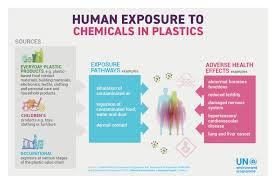
https://www.ehn.org/scientists-call-for-urgent-action-as-plastic-linked-...
Plastics and the chemicals used to make them are infiltrating our bodies and environment in ways that damage health, worsen inequality, and evade government oversight, according to scientists and advocates at a recent panel.
Douglas Main reports for The New Lede.
In short:
- Scientists and policy experts warn that plastics and their additives, such as phthalates, are causing declining sperm counts, premature births, thyroid disruption, and tens of thousands of deaths annually due to heart disease.
- Microplastics were found in human arterial plaque in a 2024 study, doubling the risk of heart attack, stroke, or death, while other studies link airborne plastic pollution from manufacturing to increased cancer risk.
- Activists and lawmakers are fighting back, citing wins like halting new plastic-burning plants in Ohio and overturning industrial zoning tied to a major plastics corporation in Louisiana.
Key quote:
“These chemicals are literally killing people.”
— Leo Trasande, researcher and director of New York University’s Center for the Investigation of Environmental Hazards
Why this matters:
Plastic pollution has evolved from an environmental nuisance into a public health crisis. The microscopic plastic particles and chemical additives are now found in human organs, bloodstreams, and placentas. Chemicals like phthalates, commonly used to soften plastic, are known endocrine disruptors, interfering with hormones that regulate everything from metabolism to mood. Microplastics, meanwhile, are turning up in placentas and lung tissue, raising red flags for long-term impacts on cognition, heart health, and fertility.
These threats are not distributed evenly: Many of the nation’s plastic manufacturing and waste-burning hubs are clustered in communities of color and low-income neighborhoods, exacerbating health disparities that already exist. With President Trump scaling back environmental protections and weakening the EPA's ability to regulate industrial pollution, much of the resistance is being driven locally — by activists, scientists, and affected residents who are documenting the risks and pushing for reform.
Related EHN coverage:









